Questões de Língua Inglesa do ano 2013
Lista completa de Questões de Língua Inglesa do ano 2013 para resolução totalmente grátis. Selecione os assuntos no filtro de questões e comece a resolver exercícios.
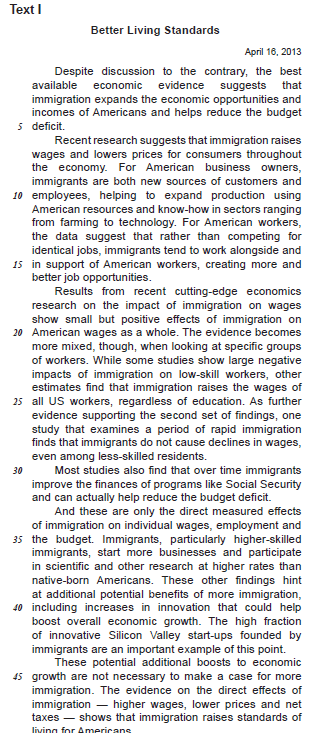
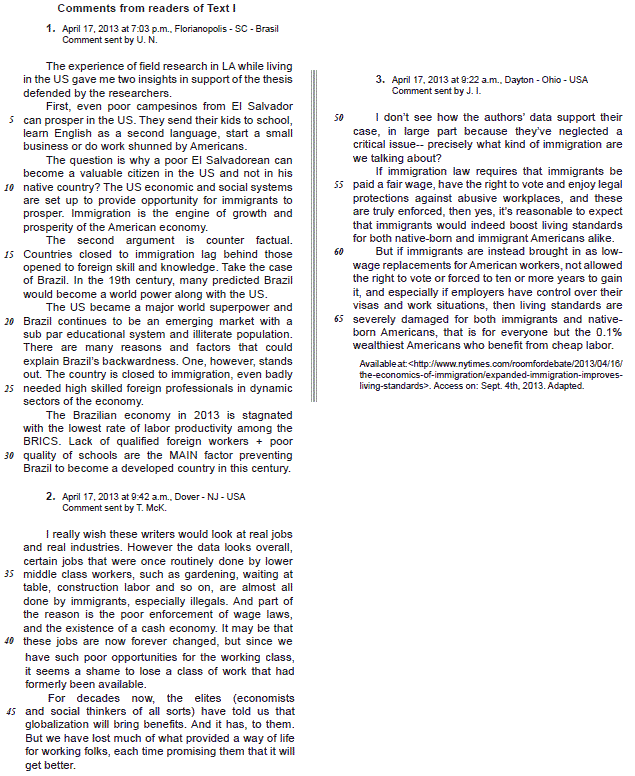
- A. higher standards of living in the US have attracted more immigrants from neighboring countries.
- B. American salaries have risen because of the lowskilled immigrants that have left the US.
- C. the increase of immigrant population in the USA has benefitted the economy and created more job opportunities.
- D. the additional influx of immigrant workers and professionals had a positive impact on the educational standards of Americans.
- E. more businesses and high-technology enterprises take advantage of undereducated workers moving into the US.
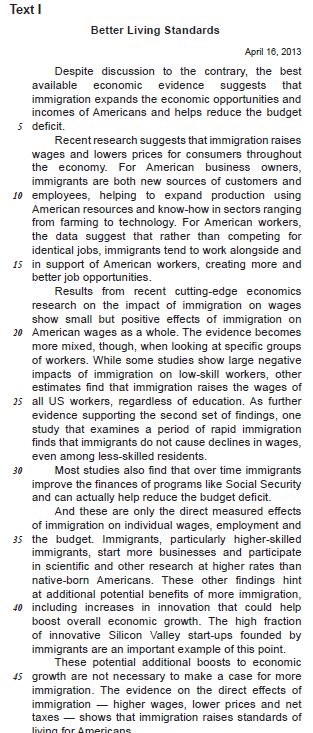
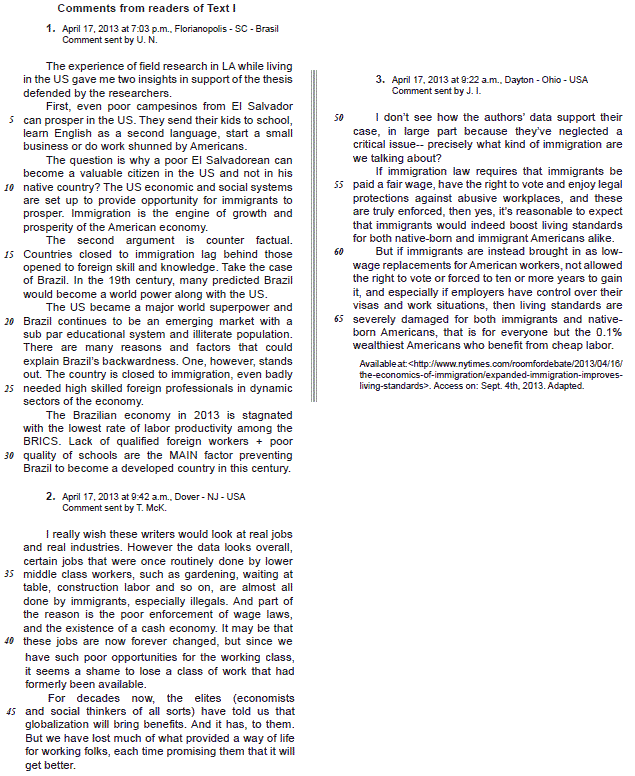
- A. high immigration rates lead to a decline in economic growth and affect the citizens standards of living by reducing the prices of goods.
- B. higher rates of immigration help support national welfare programs because the foreign population expands the share of contributors to these programs.
- C. wages are not reduced even when the country experiences high rates of immigrant populations in all educational levels.
- D. foreign professionals have set up many successful IT start-ups and integrated research projects contributing to scientific development.
- E. more innovation efforts are seen in the economy when a large number of high-skilled professionals are attracted to the country.
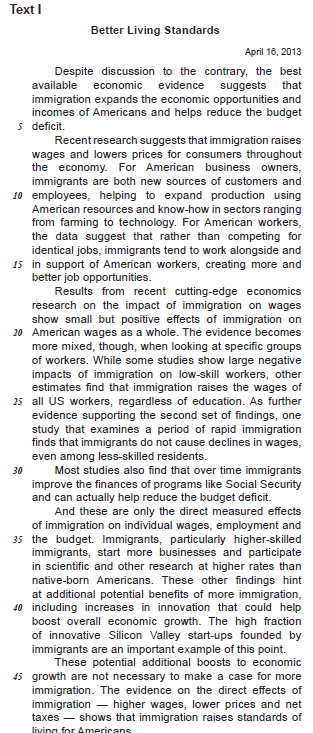

- A. as a result of
- B. because of
- C. except for
- D. despite
- E. due to
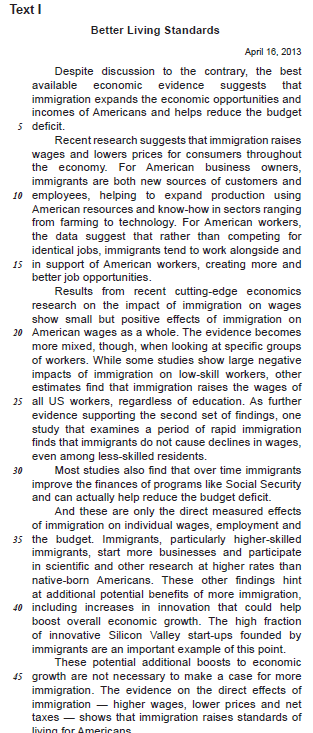
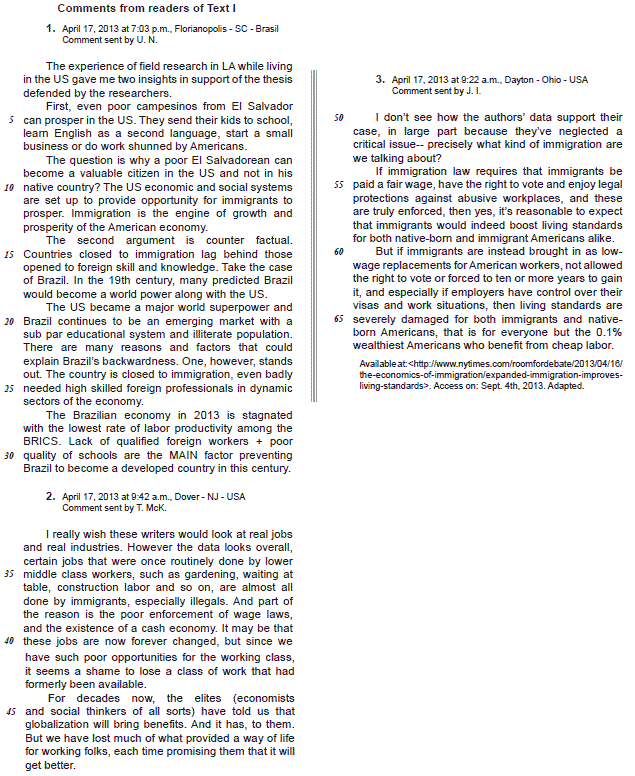
- A. other (Text I, line 23) refers to impacts (Text I, line 23).
- B. these (Text I, line 33) refers to programs (Text I, line 31).
- C. them (Text II, line 46) refers to working folks (Text II, line 48).
- D. it (Text II, line 48) refers to way of life (Text II, line 47).
- E. these (Text II, line 56) refers to workplaces (Text II, line 56).
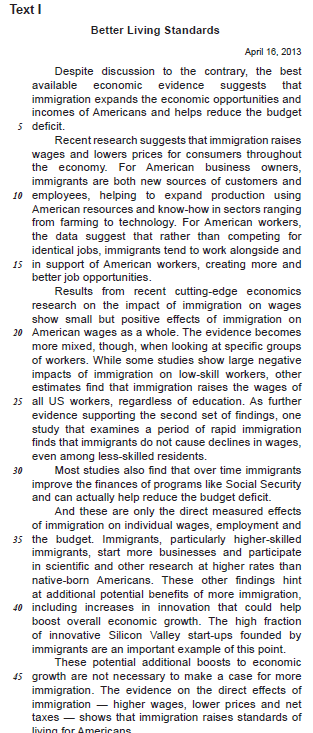
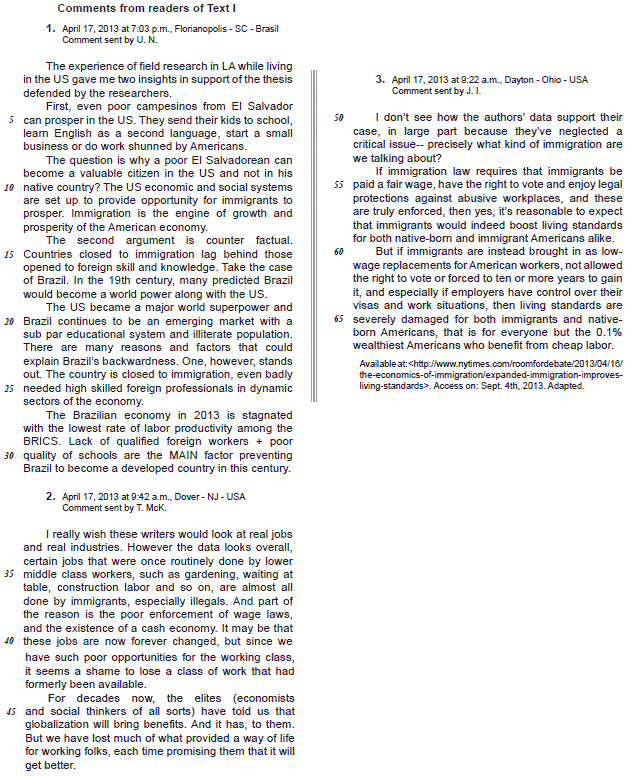
- A. cutting-edge (Text I, line 17) and vanguard convey opposite meanings.
- B. further (Text I, line 25) and additional have equivalent meanings.
- C. actually (Text I, line 32) and nowadays are synonyms.
- D. boost (Text I, line 41) and raise are antonyms.
- E. sub par (Text II, line 21) and extraordinary express similar ideas.
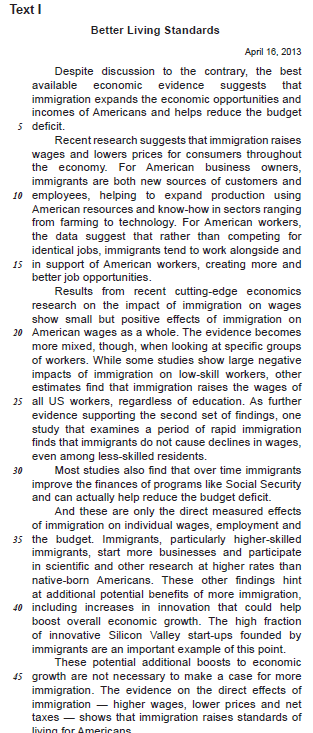
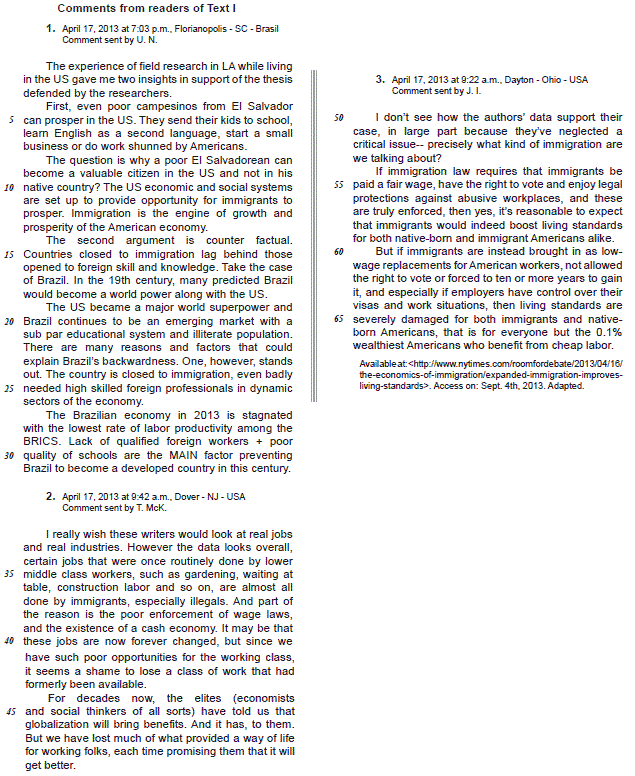
- A. even poor campesinos from El Salvador can prosper in the US (lines 4-5)
- B. many predicted Brazil would become a world power (lines 17-18)
- C. There are many reasons and factors that could explain Brazils backwardness (lines 22-23)
- D. It may be that these jobs are now forever changed (lines 39-40)
- E. "globalization will bring benefits (line 46)
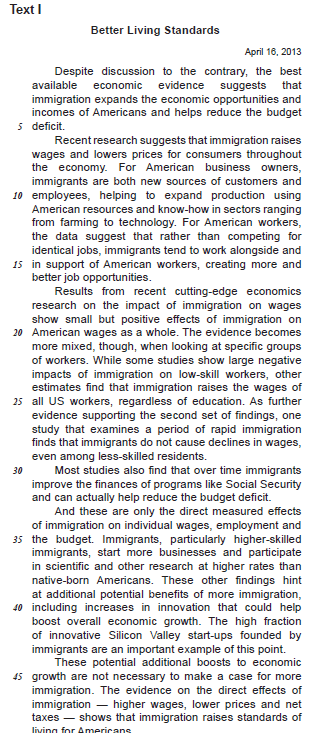
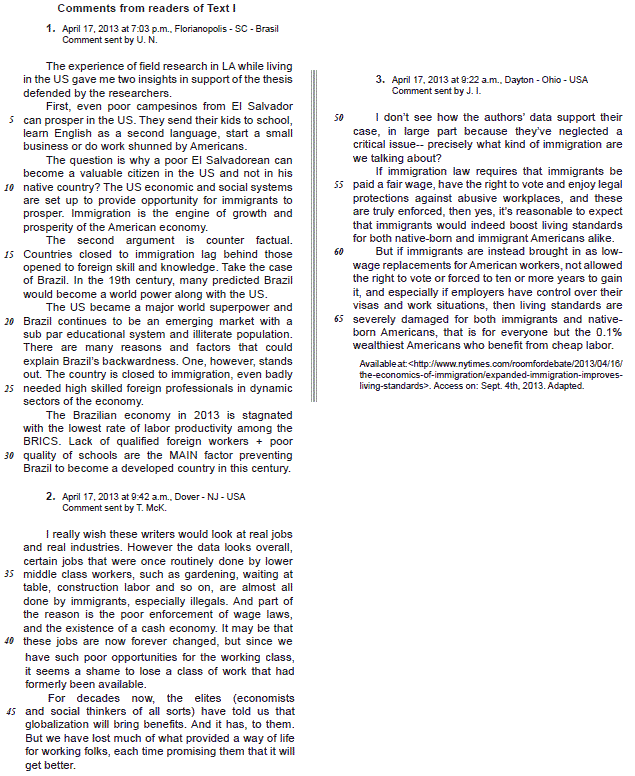
- A. established introduced
- B. ignored incorporated
- C. organized discarded
- D. forbidden eliminated
- E. created returned
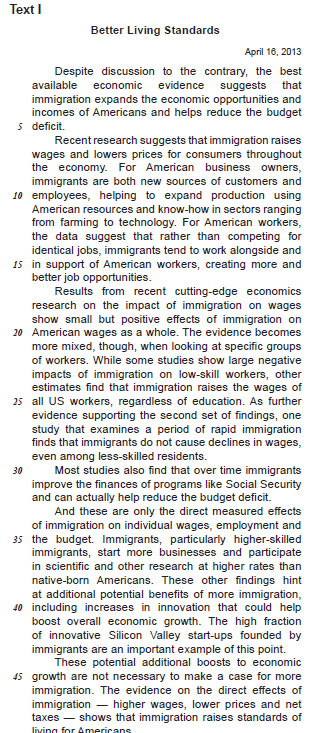

- A. contrast
- B. solution
- C. hypothesis
- D. addition
- E. explanation
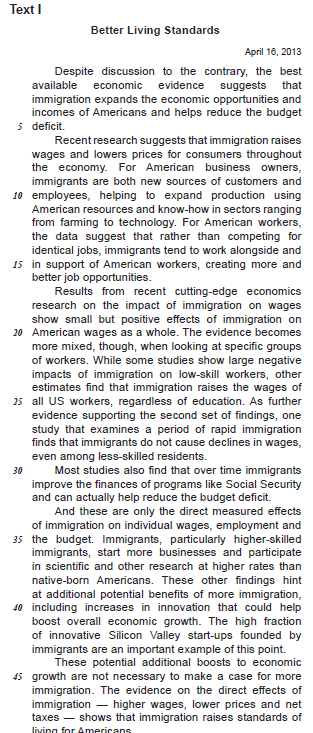
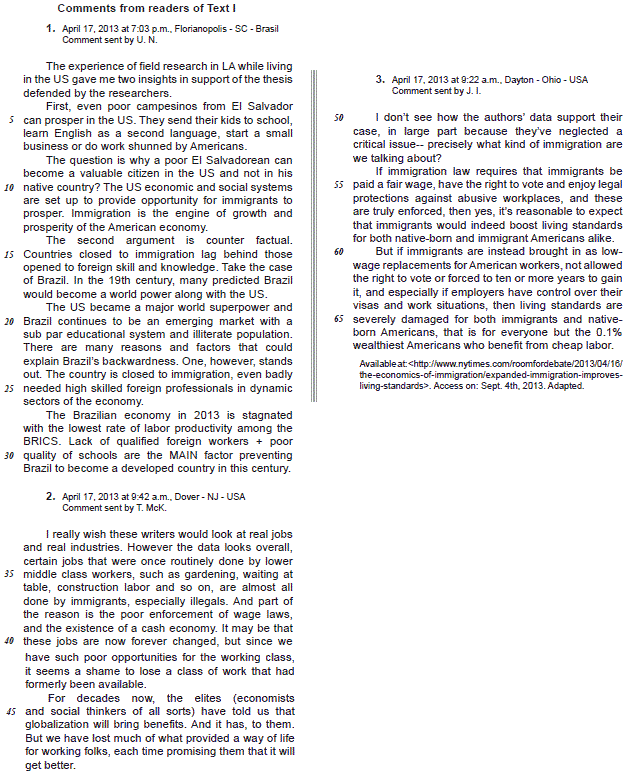
- A. a country becomes a superpower when it takes up in its workforce more qualified immigrant professionals and rejects unskilled workers.
- B. low-skilled immigrants to the US find more opportunities to prosper than they would in their countries of origin.
- C. Brazil is still an emerging country because it has closed its doors to immigration of unskilled workers from South American countries.
- D. Brazil offers its immigrant population appropriate educational conditions to become valuable citizens.
- E. Brazils illiterate population and El Salvadors immigrants to the US have no opportunity to prosper and help the countries economic growth.
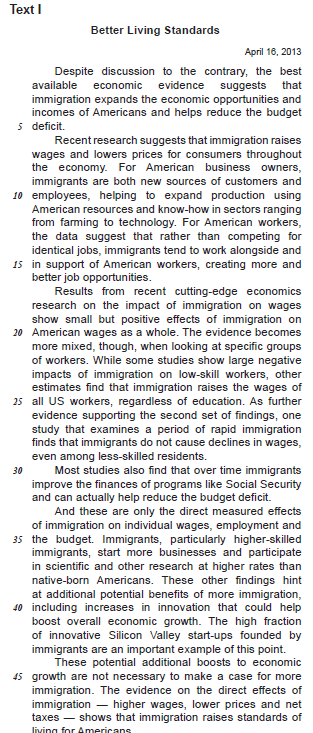
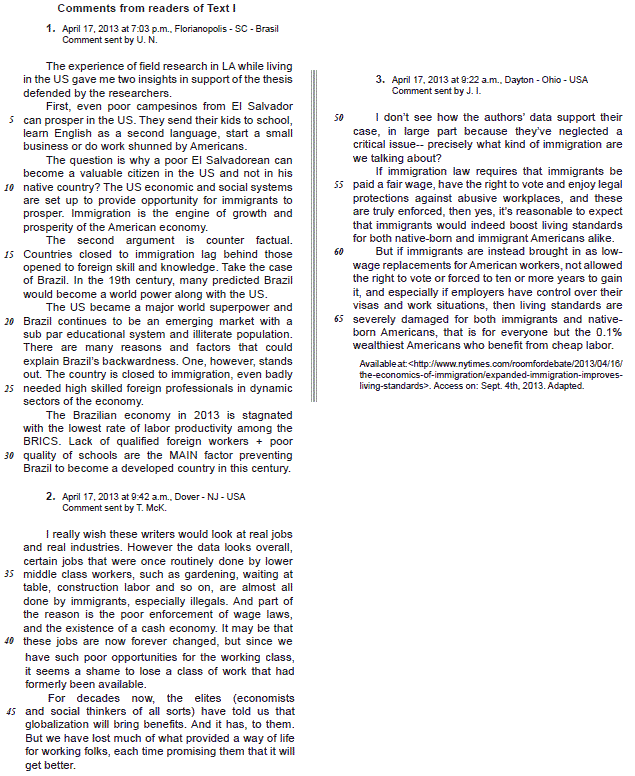
- A. author of Comment 1, U.N., has a view that is contrary to that manifested by the author of Text I in terms of a countrys economic standards.
- B. author of Comment 2, T. McK, supports the argument on the relation between economic growth and foreign workforce exposed in Text I.
- C. author of Comment 1, U.N., and the author of Comment 3, J.I., side with the author of Text I about immigration and economic development.
- D. authors of Comments 2 and 3, T. McK and J.I., respectively, oppose the view on the relation between economic development and rates of immigration expressed in Text I.
- E. three commentators agree with the perspective on the importance of immigration defended by the author of Text I.


